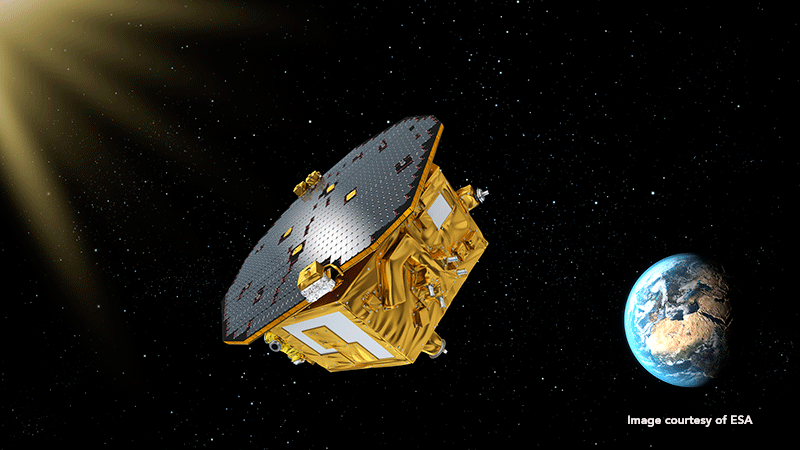Operations of the LISA Pathfinder are brought to successful completion

Gravitational waves, a spin-off prediction from Einstein’s General Theory of Relativity, are created by massive objects upon being accelerated, oscillated or violently perturbed. Scientists have spent decades trying to bear out this theory in practice. Although there have been some breakthroughs in ground-based observatories, like the Laser Interferometer Gravitational-Wave Observatory (LIGO), the only real way of detecting them is in space.
Space detection of these waves is precisely the goal of the LISA mission (Laser Interferometer Space Antenna), slotted in for a 2034 launch. To prove the mission’s viability beforehand, however, it was necessary to design and develop a forerunner proof-of-concept mission. Enter LISA Pathfinder (LPF), an interferometer that had to be capable of recording the slightest ripples in the space-time fabric. Its operations finally came to an end last July, when the onboard transmitter was switched off.
Launched back in November 2015, Lisa Pathfinder was a joint ESA-NASA research project to try out the ultimate gravitational-wave detection technology and confirm that LISA’s basic concept (the use of a laser interferometer) could be carried out in practice.
The heart of this spacecraft is the LISA Technology Package (LTP), designed by Airbus Defence & Space Ltd. Inside it are two 2kg cubes separated by 38 centimeters. An interferometric laser beam passes from one to the other to measure and monitor (with unprecedented precision) the position and orientation of these test masses. Any passing gravitational wave would then show up as a change in the position of the cubes, thus validating this technology for future use in a full-scale mission.
GMV has played a key role in this Airbus DS-primed industrial consortium, validating Data Management Unit (DMU) of the LTP, from its headquarters in Madrid. Additionally, GMV has supported definition of mission analysis and also has taken on responsibility for operational control of the satellite orbit, doing all this from the European Space Operations Centre (ESOC), as well as the management of the scientific data sent by the instruments to the European Space Astronomy Centre (ESAC).
This project has served as a highly-successful testbed. LPF has fulfilled its main objective of proving LISA to be technologically viable. Furthermore, data collected on the LISA Pathfinder mission will also help out future research into fundamental physics and space-based gravity experiments.